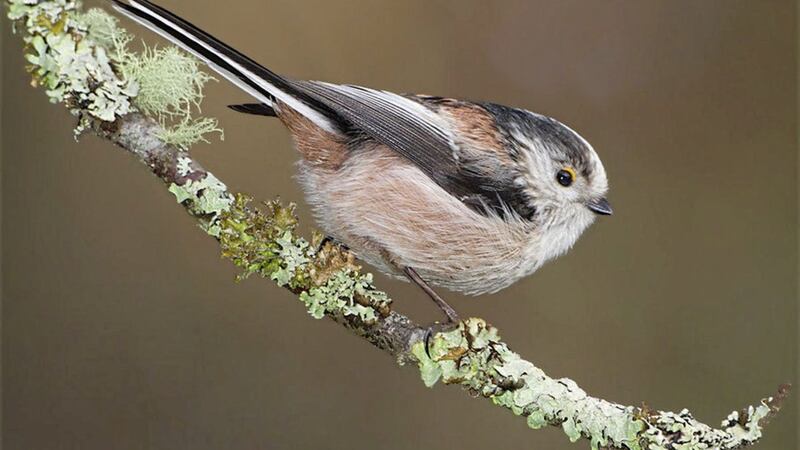MOVING through my garden like tiny puff balls see-sawing their long tails as they flitted through branches of rowan and birch in their incessant quest for food, a small flock of long-tailed tits (Aegithalos caudatus) recently engaged my attention and my senses.
Their acrobatic movements, distinctive trilled calls and delicate pinkish tones provided a welcome distraction from the fading daylight.
The long-tailed tit, sometimes called the ‘flying lollipop’ is a bundle of nervous energy and one of our smallest resident birds, apart from its long tail.
Slighter larger than the Goldcrest, adults are around 14cm long, over half of which is made up of the impressive tail and the bird weighs a mere 7 to 10g.
With its round body and long tail, the long-tailed tit is easy to identify. A gregarious bird, usually seen in small flocks, you're likely to hear their approach before you see them.
The high ‘see see see’ calls, as they communicate with one another are very obvious and once you’ve heard them you’ll always know when a flock of long-tailed tits is in the vicinity.
The bird has a white head and a dark stripe extending from just above the eye to the black back. Its underparts are dusky white and pink, while the wings are dark with a large pinkish patch.
Birds Britannica by Mark Cocker and Richard Mabey lists many vernacular names for the bird which appear to stem from the oval, dome-shaped and very elaborate nest it builds with wool and moss bound together with spider's web and camouflaged with up to 4,000 lichen flakes.
The names include ‘bum barrel’, ‘bush oven’, ‘feather poke’ and ‘pudding bag’.
English nature poet John Clare, known as the ‘peasant’ poet, provides his tribute to the local long-tailed tits in the poem ‘Bumbarrel’s nest’ in which he describes the intricate nest and gives a vivid sense of the busyness of the bird.
He writes: "There, full as soon, bumbarrels make a nest, Of mosses grey with cobwebs closely tied, And warm and rich as feather-bed within, With little hole on its contrary side, That pathway peepers may no knowledge win, Of what her little oval nest contains."’
In Irish, Meantán earrfhada mirrors its English name pointing to the long (fada) tail/extremity or end (earr).
Common throughout Ireland they feed mainly on insects, spiders and grubs but will also take small seeds in the autumn. They favour deciduous woodlands and hedgerows but are equally at home in gardens where shrubs and trees provide food and cover.
As with other small birds, long-tailed tits can suffer high mortality in cold winters. To help prevent this they often roost tightly together to help retain heat over the winter months.
In spring, they begin breeding much earlier than other tit species, often as early as late February before many leaves open out. Clutch size varies from eight to 12 and a pair will normally raise only one brood during a typical breeding season – though two broods are not unusual.
The birds passing through my garden didn’t stay long. Long-tailed tits don’t delay but rather, as Clare writes, "down the hedge they hang and hide along".
They were there long enough though to lift the dark mood of a bleak mid- winter day.
So, with the passing of the winter solstice and the year now turning, keep your eyes and ears open for that special something from the natural world which can, if you allow it, help brighten the day.
Athbhliain faoi shéan is faoi mhaise daoibh. A happy New Year to you all.









